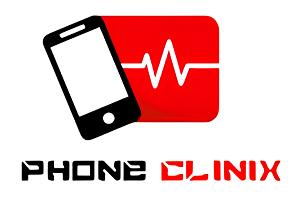Water damage is one of the most common causes of phone malfunctions, yet many people don’t realize their device has been affected until it’s too late. Even a small amount of moisture can cause severe damage to a smartphone’s internal components, leading to performance issues, unexpected shutdowns, or complete failure. Fortunately, there are several ways to check if your phone has suffered water damage before it becomes irreversible.
In this guide, we’ll discuss how to identify water damage, signs to look for, and how phone Diagnosing can help you assess your device’s condition.
Signs of Water Damage in a Phone
Water damage doesn’t always result in immediate failure. Sometimes, the symptoms take time to appear. Below are some common indicators that your phone might be water-damaged:
1. Visible Water or Moisture
If you can see water inside the screen, camera lens, or charging port, it’s a clear sign that moisture has entered the device.
2. Corrosion on Internal Components
Water can cause corrosion on metal parts inside your phone, which may lead to long-term damage. If you open the phone (or have a technician inspect it), look for green or white residue on the internal circuits.
3. Unresponsive Touchscreen
A water-damaged phone often has touchscreen issues. If your screen becomes unresponsive, lags, or registers ghost touches, moisture may be affecting the display’s sensitivity.
4. Random Restarts or Shutdowns
Water damage can cause short circuits, leading to random restarts, unexpected shutdowns, or a phone that won’t turn on at all.
5. Distorted Sound from Speakers
If your phone’s speaker sounds muffled, crackly, or distorted, it could be due to water exposure. Water trapped inside the speaker can affect audio quality.
6. Overheating Issues
Water damage can interfere with the battery and cause overheating, which may lead to long-term battery performance issues or even swelling.
7. Charging Problems
If your phone doesn’t charge properly, takes longer than usual, or heats up excessively when plugged in, water damage may have affected the charging port or battery.
How to Check for Water Damage Using the Liquid Contact Indicator (LCI)
Most smartphones, including iPhones and Android devices, come with a Liquid Contact Indicator (LCI) that changes color when exposed to water. Here’s how to check it:
For iPhones:
- Locate the SIM card tray.
- Use a SIM ejector tool or a paperclip to remove the tray.
- Look inside the SIM slot for a small sticker.
- If the sticker is white or silver, your phone is safe. If it has turned red or pink, water damage has occurred.
For Android Phones:
- Some Android devices also have an LCI inside the SIM card tray.
- Others may have it near the battery compartment (for older models with removable batteries).
- Use a flashlight to check for a red or pink indicator.
Using Phone Diagnostic Software to Detect Water Damage
If your phone isn’t showing obvious signs of water damage, but you suspect there’s an issue, phone diagnostic software can help. These apps run a series of tests to check hardware components for malfunctions.
Top Phone Diagnostic Software for Water Damage Detection
- Phone Doctor Plus (iOS & Android)
- Runs 30+ diagnostic tests, including touchscreen, speaker, and sensor checks.
- Can detect if components are malfunctioning due to moisture.
- TestM (iOS & Android)
- Comprehensive hardware diagnostic tool.
- Checks screen responsiveness, sound, charging, and other vital features.
- AccuBattery (Android)
- Monitors battery health and detects unusual power consumption caused by water damage.
- Samsung Members App (For Samsung Devices)
- Built-in diagnostics to check charging, screen, and button functionality.
- Apple Support App (For iPhones)
- Helps diagnose hardware issues and allows you to contact Apple Support for further evaluation.
By running these diagnostic tools, you can assess your phone’s condition before irreversible damage occurs.
What to Do If Your Phone Has Water Damage
1. Turn It Off Immediately
If your phone has been exposed to water, power it down right away to prevent short circuits.
2. Remove SIM Card and Accessories
Take out the SIM card, memory card, and any attached accessories to prevent further damage.
3. Dry the Exterior
Use a microfiber cloth to wipe off any visible water. Do not use a hairdryer or heat source, as this can push water deeper inside.
4. Use Silica Gel Packets
Instead of placing your phone in rice (which can leave dust inside), use silica gel packets to absorb moisture. Put your phone in a sealed bag with silica gel for at least 24-48 hours.
5. Do Not Charge Immediately
Wait until you are completely sure your phone is dry before attempting to charge it. Plugging in a wet phone can cause a short circuit.
6. Seek Professional Repair Services
If your phone isn’t working properly after drying, take it to a professional technician for further assessment.
How to Prevent Water Damage in the Future
- Use a Waterproof Case – Invest in a waterproof phone case if you frequently expose your device to water.
- Be Cautious Around Liquids – Keep your phone away from pools, sinks, and rain whenever possible.
- Check for Waterproof Ratings – Some modern smartphones come with IP67 or IP68 ratings, meaning they are water-resistant. However, no phone is completely waterproof.
- Avoid Using Your Phone in the Bathroom – Steam from showers can also cause internal moisture damage.
Final Thoughts
Water damage is a serious issue that can lead to irreversible phone failure. By learning how to check for signs of moisture damage, using phone diagnostic software, and taking preventive measures, you can protect your device from costly repairs or replacement.
If you suspect your phone has been exposed to water, act quickly—power it off, dry it properly, and use diagnostic tools to assess its condition. The sooner you identify water damage, the better your chances of saving your device before it’s too late.



